Keep Revenue Flowing by Monitoring these 3 Key Performance Indicators

Many practices already have a close eye on days in A/R for payers, and that is undoubtedly a crucial metric to be watching! There are other indicators, however, that allows you to quickly pinpoint if you are heading for a shortage in cash.
In addition to watching payer A/R and ensuring most receivables (at least 75%) resolution before the 60-day mark, I recommend closely monitoring three additional key performance indicators (KPIs). They are patient slots occupied, point-of-service (POS) collections percentage, and days to claim submission from the date of service (DOS).
Patient-slots-occupied ratios will reveal revenue opportunities
This KPI is the ratio of appointment slots available to appointments filled. The goal is to be running at 100% capacity, which means you are maximizing revenue opportunities. Offices with variable appointment slots (for example, a half-hour set aside for an established patient wellness check, 45 minutes for a new patient exam, and 15 minutes for sick visits) may want to consider creating ratios for each type of appointment offered.
Scrutinizing the ratios will give you clues about the patient population flowing through your office. If you find new patient visits are lower proportion than existing patients, you may want to consider advertising for new patients or confirming your listing on all your payer websites. A small percentage of wellness visits may benefit from appointment reminders. Conversely, if you find that a particular ratio is very high and you are running over capacity, you may want to consider adding appointment hours. The only way to generate steady revenue is to have a constant flow of patients through your doors.
DOS collections are more important than ever
Shifting reimbursement models rely heavily on patient payments for reimbursement. It is more important than ever to collect co-payments and overdue balances. The Healthcare Financial Management Association’s (HFMA) 2018 MAP Winner for Physician Practices had a POS collection rate of 50.6%. Most practice management systems will help you track this metric, but the simple explanation is that it is the ratio of patient payments made over total self-pay accounts receivable. One of the easiest ways to improve this metric for your practice is to make collecting payment at time-of-service a priority. Encourage practice administrators to track the number of payments received at the front desk daily. Some practice management systems can create reports based on the patient schedule, which shows outstanding balances. If this is the case, administrators must review all accounts at the end-of-day to confirm entry of payments received in the day. If there are issues, front desk personnel may need additional training on how to ask patients for money.
Charge lag days confirm front-end operations are running smoothly
This metric, which measures the time between the patient visit and the corresponding claim submission to the clearinghouse (and is also usually easy to generate with practice management system reporting), reveals the efficiency of your front-end workflow. The 2018 HFMA Physician’s Practice MAP Winner in this category had an average charge lag of 2.7 days.
The ideal amount of charge lag days can depend on your practice workflows because this KPI includes coding, charge posting, and claim generation. If your charge lag days vary, you may be at risk of going through cycles with reduced payments. Building consistent charge workflows translate into regular revenue. Work with your front-end teams, including physicians that are slow to sign-off on patient records, to ensure a steady stream of claims is going out daily.
The only way to keep cash flowing into your practice is to ensure everyone is working as a team and aware that there are real consequences to interruptions in workflow. Every member of a physician practice – both administrative and clinical – needs to do their part to keep your doors open and the lights on.

